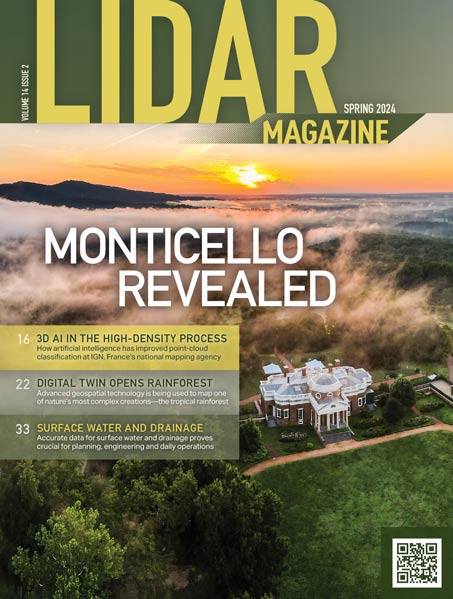Esri has developed technology to optimize point cloud data in LAS format. The optimized format enables fast and efficient access to LAS structured lidar and is well suited both for direct use in desktop applications as well as for archiving, storage, cloud based data distribution. Optimized LAS was built from the ground up with attention paid both to the different modes of use and compression.
What is Optimized LAS?
Optimized LAS is a file format that contains all the information stored in a LAS file format, but has a structure that is optimized for many different uses and is also compressed to reduce the files sizes. Both access performance and size are important considerations in relation to the massive volumes of Lidar data that are being collected and used in a wide range of geospatial applications. In addition to storing all the standard LAS specified attributes, Optimized LAS also includes statistics of the points and indices that enable fast access. Optimized LAS applies lossless compression of the data so as to reduce the file sizes typically to about 20% of the original LAS file. This compression reduces storage cost, while the optional reordering of the points speeds up data access especially over slower network connections. Optimized LAS files are given the file extension .zLAS
What is the LAS Optimizer?
The LAS Optimizer is a software executable that improves the archiving, sharing and overall use of LAS lidar data via compression and decompression capabilities. It is a freely available tool that Esri has created to convert LAS files to and from Optimized LAS.
Why did Esri create Optimized LAS?
In the past, LAS files were kept directly on disk for quick desktop access. More recently, organizations have become interested in consuming lidar data over shared networks and on cloud platforms, such as ArcGIS Online. It is a major challenge to store and manage these LAS files in a manner that allows fast and efficient access to the data because they were originally designed for data exchange, not direct use. The Optimized LAS format addresses many of these issues by reducing storage costs and improving access.
Do you need to be a licensed ArcGIS user?
No, anyone, with or without ArcGIS, can take advantage of Optimized LAS. Licensed ArcGIS users have the added benefit of being able to work with Optimized LAS files directly in ArcGIS without needing to decompress them first.
Does this mean LAS data can be used directly in ArcGIS?
The optimized LAS data can be used directly without need to decompress it first. The ArcGIS 10.2.1 platform has been enhanced to support reading of optimized LAS.
Is data lossless?
The lidar point record data is preserved exactly. There is no loss of information so the full integrity of the data is maintained. An optional part of the optimization is to re-arrange the point ordering, but this does not result in any loss of point accuracy or attributes. Attributes such as time of the pulse are maintained if available in the source LAS files.
How does the LAS Optimizer make data access more efficient?
Statistics and spatial indexing are added during the compression process. This makes the resulting files easier to use and the data is accessed more efficiently for both spatial and thematic queries. An option to sort point records to improve the I/O efficiency of queries on the optimized files is included.
Is there a cost?
No, you can use Esri LAS Optimization free of charge. ArcGIS is not required. This means any client can download an optimized LAS file, decompress it, and use the resulting LAS file in their application of choice. Clients with ArcGIS 10.2.1 get the added benefit of being able to use the files directly without the need to decompress. Esri will be providing an Open API to enable other software developers to directly read and write Optimized LAS.
How do I get optimized?
A free standalone executable that handles both compression and decompression is available for anyone to download from Esri’s web site. It has both a graphical interface as well as support for command line execution. Free libraries that will enable software from other vendors to directly read and write Optimized LAS are planned for release later in 2014.
